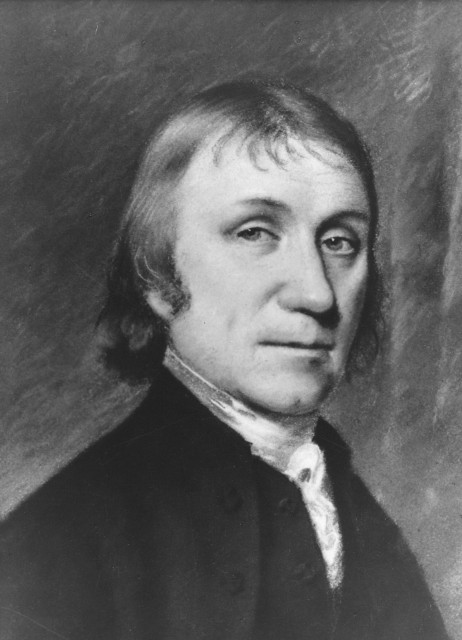Joseph Priestley
1733-1804

Priestley published 12 books and about 50 papers on scientific topics in addition to many more on theology, education, history, and other subjects. In chemistry, he mainly studied gases or "airs" as they were then called. He is known as the discoverer (1774) of oxygen (obtained by heating red mercuric oxide) though it was independently discovered by the Swedish chemist Carl Wilhelm Scheele. Priestley held throughout his life to the phlogiston theory. He discovered about 20 other gases, including oxides of nitrogen, sulfur and carbon, ammonia, hydrogen chloride and silicon tetrafluoride; by using mercury instead of water in his pneumatic trough, he was able to obtain the water-soluble gases. Priestley was a non-conformist clergyman whose dissent from the Church of England and support of the French revolution eventually led, in 1794, to his migration from England to Northumberland, Pennsylvania, where his home is now a memorial maintained by the American Chemical Society.
Sponsor: Paul Hunter
Location in chemistry building: Third Floor; West Wing North Wall; Sequence 5
Source: National Portrait Gallery (Washington)